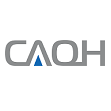Streamlining this process will save time, money and improve patient access to care.
Prior authorization is intended to help manage the use of healthcare resources, reduce overuse or misuse of services and control healthcare spending.
At a high level, the process is seemingly straight-forward: a healthcare provider will submit their intended treatment plan to the patient’s insurance, the plan will review the request, ask for follow-up information if necessary and issue a decision as to whether or not it is authorized.
A standard electronic method for conducting at least a portion of the prior authorization process has been federally mandated since the early 2000s. However, nearly 20 years later, 88% of prior authorizations are still conducted either partially or entirely manually,¹ using faxes and phone calls to request and provide clinical information. When managed this way, prior authorizations can take hours, days and even weeks — leaving patients in limbo.
For providers, juggling the individual requirements and processes of each health plan is a significant administrative burden.
On average, each manual prior authorization takes 16 minutes of provider staff time, while electronic prior authorizations take nine minutes to complete.² And, because it may not be clear what documentation is needed at the time of submission, too often, requests are denied or delayed because of missing information. This results in a follow-up process that is daunting for all parties involved and can cause delays to patient care. The problem is so widespread that these old school processes add as much as $25 billion to the cost of US healthcare each year.³
So, why hasn’t this process been automated?
According to a recent white paper from CAQH CORE, a nonprofit alliance of health plans, providers, vendors and government entities, there are numerous barriers that have hindered the streamlining of this workflow. For example, each health plan uses different codes to identify errors, next steps or what additional clinical information the doctor must provide. This kind of inconsistency is a serious administrative hassle for providers that work with multiple plans. On top of that, some codes are so generic that the provider staff is forced to call the plan to understand what’s going on.
Similarly, there is no agreed upon standard for the exchange of the supplemental clinical information — referred to as attachments — that providers are asked to submit. And some states actually require part of the process to be conducted manually — sometimes because electronic options aren’t yet as reliable.
Here’s the good news: We may have finally reached a tipping point. There is so much frustration around prior authorizations that stakeholders are coming together to do something about it.
For starters, in its Patients Over Paperwork initiative, CMS solicited public input regarding ways to reduce administrative and regulatory burdens across healthcare. Prior authorization, in particular, was cited as an area for improvement.
Through CAQH CORE, many of the nation’s leading health plans, vendors and hospital systems are continuing to collaborate on operating rules to close automation gaps in the prior authorization process and reduce the wait time for a final answer. These rules eliminate unnecessary back and forth between health plans and providers, reduce processing timeframes and alleviate the strain on staff. Most importantly, by increasing administrative efficiencies, these operating rules help patients access their care faster.
And, as solutions such as APIs, emerging standards and artificial intelligence are increasingly leveraged across healthcare to make processes and service offerings smarter, many are calling for these technologies to be utilized to improve administrative workflows, including prior authorizations.
It will take time, however, before these approaches can have a widespread impact. In the interim, health plans and providers can make a difference by adopting the standards that do exist, implementing operating rules to streamline the process further, participating in industry-wide efforts to tackle the problem and mustering whatever patience they have — better days are coming.
(1) 2018 CAQH Index®: A Report of Healthcare Industry Adoption of Electronic Business Transactions and Savings. CAQH, 2019, 2018 CAQH Index®: A Report of Healthcare Industry Adoption of Electronic Business Transactions and Savings, www.caqh.org/sites/default/files/explorations/index/report/2018-index-report.pdf.
(2) 2018 CAQH Index®: A Report of Healthcare Industry Adoption of Electronic Business Transactions and Savings. CAQH, 2019, 2018 CAQH Index®: A Report of Healthcare Industry Adoption of Electronic Business Transactions and Savings, www.caqh.org/sites/default/files/explorations/index/report/2018-index-report.pdf.
(3) Moving Forward: Building Momentum for End-to-End Automation of the Prior Authorization Process. CAQH CORE, 2019, Moving Forward: Building Momentum for End-to-End Automation of the Prior Authorization Process, www.caqh.org/sites/default/files/core/white-paper/CAQH-CORE-Automating-Prior-Authorization.pdf.
Rachel Goldstein is a Senior Manager at CAQH CORE. Industry-led, CAQH CORE was formed to drive the creation and adoption of healthcare operating rules that support standards, accelerate interoperability, and align administrative and clinical activities among providers, payers, and consumers. CAQH CORE Participating Organizations represent more than 75 percent of insured Americans, including health plans, healthcare providers, vendors, government entities, and standard setting organizations. Five phases of CAQH CORE Operating Rules and Certification Test Suites have been issued to date.
